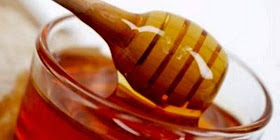Phloroglucinols from Anti-Microbial Deposit-Resins of
Australian Stingless Bees (Tetragonula carbonaria)
Phytother Res. 2014 Sep 18. doi: 10.1002/ptr.5225
Stingless bees accumulate deposits of plant resins that are
mixed with beeswax to produce propolis. Previous studies have reported
anti-microbial constituents of stingless bee (Tetragonula carbonaria) propolis
from East Australia, but several components remained to be characterized. In
the search of natural products yet unreported for Australian propolis, four bee
deposit-resins of T. carbonaria bees were analysed by gas and liquid
chromatography mass spectrometry with accurate mass measurements. Ethanolic extracts
of the deposit-resins were tested in vitro against Staphylococcus aureus ATCC
25983 and Pseudomonas aeruginosa ATCC 27853 by the agar diffusion method.
Phloroglucinols, flavonoids and isoprenoids were identified in samples. The
crude extracts showed strong anti-staphylococcal effects but were less active
against the Gram-negative bacterium. The diagnostic data enabled the
identification of markers that can be used for profiling other Australian
propolis sources and to target the isolation of bioactive phloroglucinols in
future studies against antibiotic resistant S. aureus strains.




















